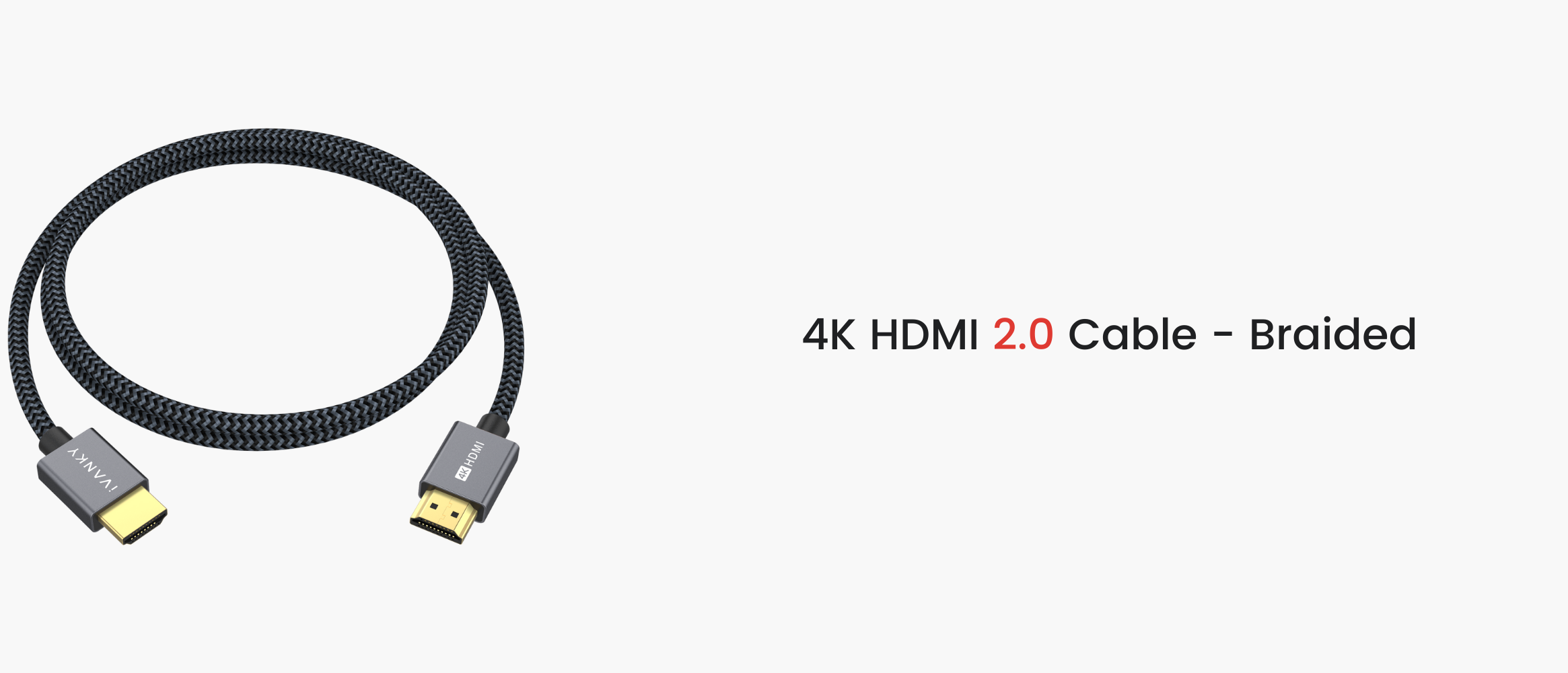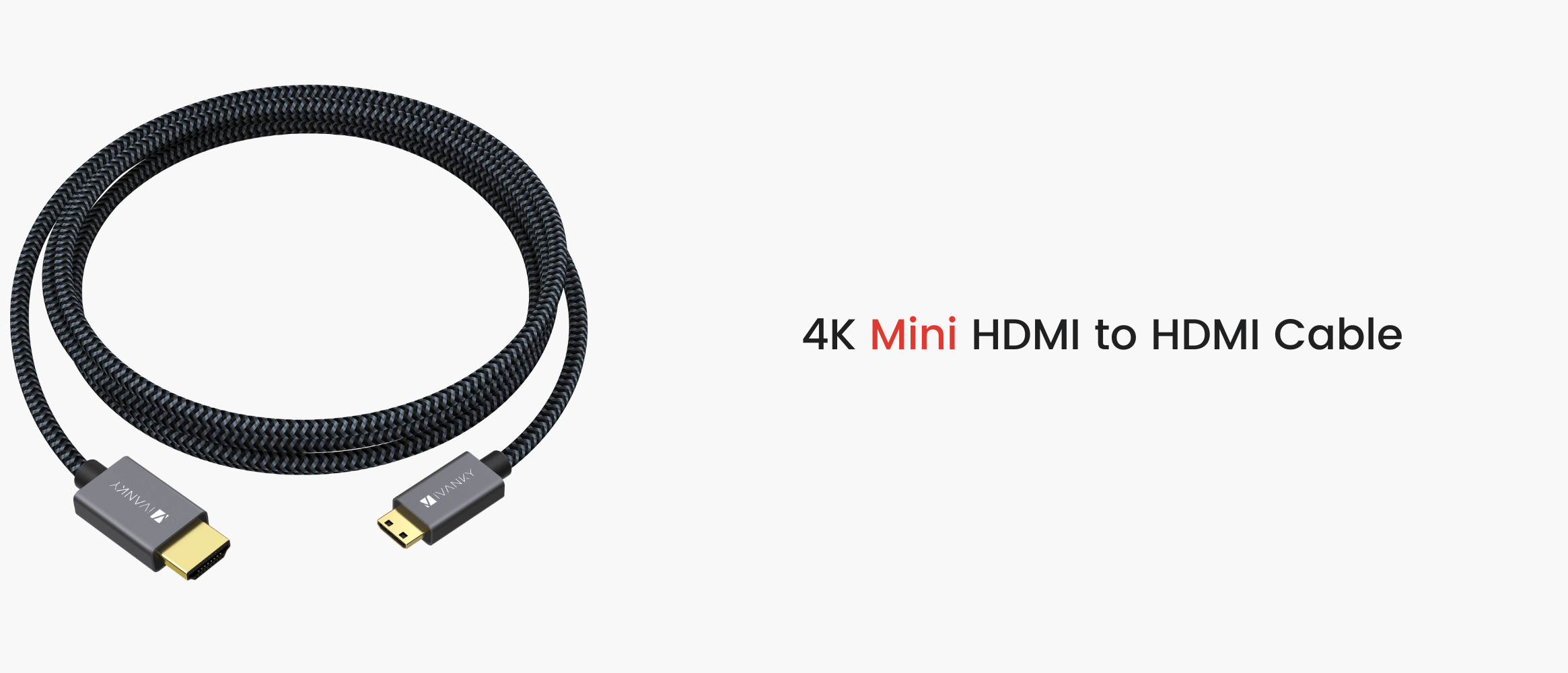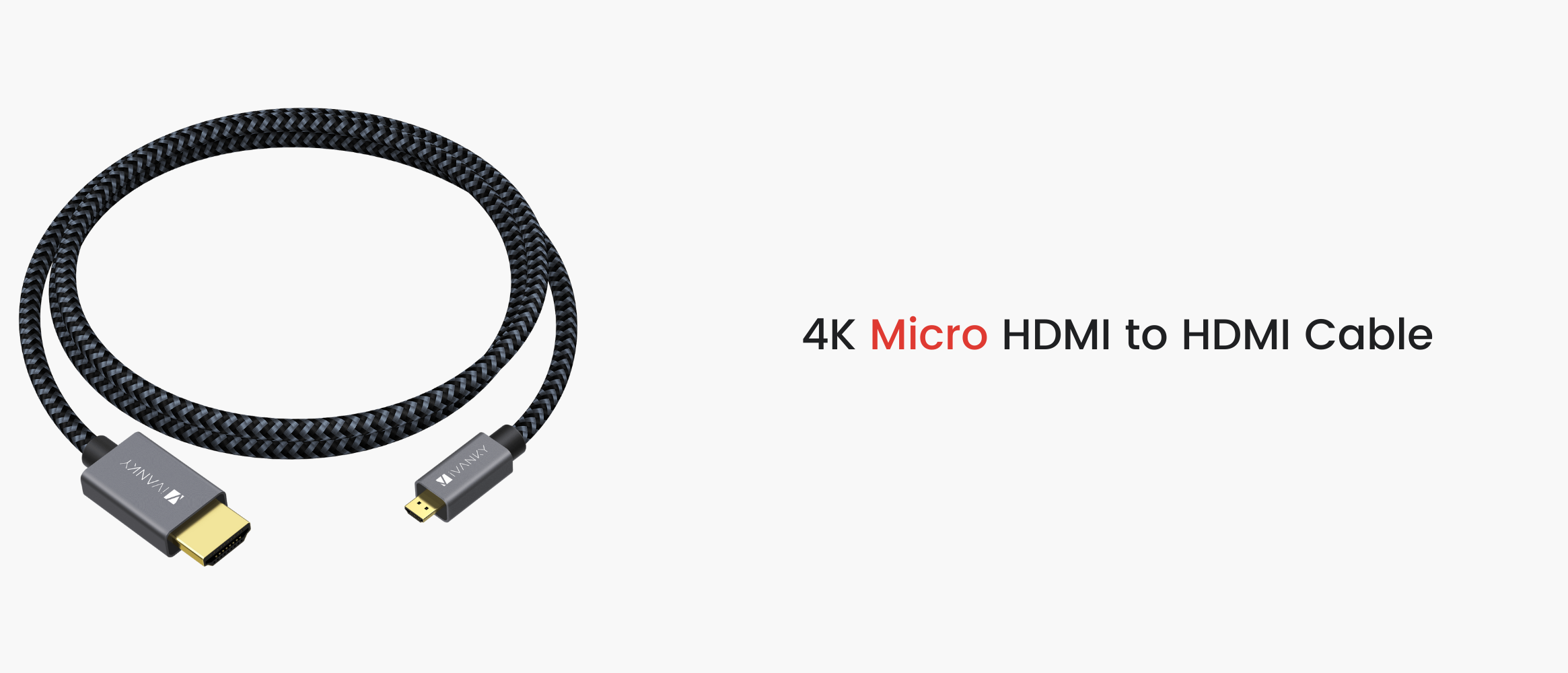FAQ about HDMI: All You Need To Know!
1. What is the latest version of HDMI?
The latest version of HDMI was released in June and called HDMI 2.1.
HDMI 2.1 supports a range of higher video resolutions and refresh rates including 8K@60Hz and 4K@120Hz, and resolutions up to 10K. Dynamic HDR formats are also supported, and bandwidth capacity is increased up to 48Gbps.
2. What are the major differences between those HDMI versions?

3. What are the important features of HDMI 2.1?
- Higher video resolutions support a range of high resolutions and faster refresh rates including 8K60Hz and 4K120Hz for immersive viewing and smooth fast-action detail. Resolutions up to 10K are also supported for commercial AV, and industrial and specialty usages.
- Dynamic HDR support ensures every moment of a video is displayed at its ideal values for depth, detail, brightness, contrast, and wider color gamuts—on a scene-by-scene or even a frame-by-frame basis.
- The Ultra High Speed HDMI Cable supports the 48G bandwidth for uncompressed HDMI 2.1 feature support. The cable also features very low EMI emission and is backwards compatible with earlier versions of the HDMI Specification and can be used with existing HDMI devices.
4. I have a 4K monitor. Which HDMI cable should I get?
HDMI 2.0 supports 4K at 60Hz, so an HDMI 2.0 cable should do the job. Please note that HDMI 1.4 also supports 4K resolution, but only at 30Hz. Trust me, you don’t want your shiny new 4K monitor to operate only at 30Hz.
5. How is DisplayPort different from HDMI? Which one is better?
Ask yourself: What are you going to use cables for?
Choosing between HDMI cables or DisplayPort cables can be flexible. Different needs may have different choices.
What do you use the cable for? Watching videos? Playing games? Generally speaking, HDMI dominates living rooms, but DisplayPort stands in the unique position of being popular amongst PC gamers.
To learn more about the differences between DisplayPort and HDMI, check out this article.
6. Does HDMI support audio?
Yes, HDMI supports inline audio with lots of advanced audio features. HDMI 1.4 introduced HDMI ARC, which allows users to utilize a single HDMI cable to transmit audio and video simultaneously.
eARC (Enhanced Audio Return Channel) is the latest audio feature released with HDMI 2.1 by HDMI Association in 2017. It supports audio formats such as DTS:X and Dolby Atmos, which delivers a cinema-quality-deep surround sound system.
Click here for more information about HDMI ARC.
7. How long can an HDMI cable go?
HDMI did not specify the maximum cable length, and yet the video signal degrades with distance.
The effective distance for standard HDMI cables is typically around 30 feet - anything longer than that requires a bus-powered signal booster, which extends the maximum length to about 100ft.
If you replace the cable core with fiber optics, it can go even further. But optical HDMI cables tend to be expensive.
8. Does HDMI include content protection capabilities?
Similar to DisplayPort, HDMI supports HDCP content protection. In the United States, HDCP support is mandated by the Federal Communications Commission (FCC).
9. The HDMI port on my old monitor is an HDMI 1.4 port, can I use an HDMI 2.0 cable?
Of course, all HDMI versions are backward compatible with previous versions, but you’ll only get HDMI 1.4 features.
10. What are Mini and Micro HDMI?
Mini and Micro are smaller versions of the standard HDMI interface. Mini HDMI (also known as HDMI Type C connector) measures 10.42 mm x 2.42 mm and also features the same 19-pin design, and the Micro HDMI (also known as HDMI Type D connector) measures 6.4 mm x 2.8 mm and features a 5-pin design.
Both are compatible with HDMI 1.4 and can be found on handheld devices including DSLR cameras, action cameras, camcorders and smartphones.
11. Can I power my laptop with an HDMI cable?
According to the HDMI specification, HDMI carries 5V 55mA. However, this isn’t enough for powering accessories or external devices, so no, you can’t power your laptop using an HDMI cable.
12. What is HDMI Alt Mode?
HDMI Alt Mode is a feature that utilizes USB-C for a full range of HDMI features. It allows the physical USB-C port to support other video and data formats - one of which is HDMI. Only devices that have a USB-C port that can also be HDMI enabled are able to use HDMI Alt Mode.
13. I have a complex cable setup. Is it OK to bend HDMI cables?
Though most HDMI cables in the market are highly flexible, there is still a need to prevent sharp bends if possible, especially those fiber optic ones, bending could cause irreversible damage to the optical core inside the cable.





